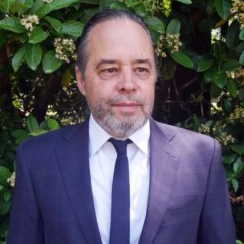Ukraine Under Fire: The Visual Arts in Ukraine and Abroad Since 2014
A special issue of Arts (ISSN 2076-0752).
Deadline for manuscript submissions: closed (15 December 2023) | Viewed by 4504
Special Issue Editor
Interests: modern Russia, especially the late-imperial period; art and war, including the Great Patriotic War of 1812 and World War I; modern France
Special Issues, Collections and Topics in MDPI journals
Special Issue Information
Dear Colleagues,
To say that Ukraine has a complicated relationship with Russia is an understatement: the region was under direct rule in the imperial period, experienced a period of freedom after 1917, followed by repressive rule through large periods of the Soviet era, and then regained independence in 1991. Now, Ukraine faces Russian hostility and the violation of its territorial integrity, which began in February 2014 with the occupations of the Crimea and Donbas region.
I solicit abstracts from scholars, critics, gallerists, and artists whose work reflects upon the role of the visual arts during the current conflict in this region. Their topics should explore how artists have dealt with the Russian invasion and other forms of hostilities in recent years. I wish to explore how Ukrainian artists represent these conflicts, how artists feel their role may have changed during wartime, what cultural shifts have resulted in the face of the Russian invasion, and how arts professionals have responded to threats to cultural patrimony.
Accepted proposals will result in the publication of articles in a Special Issue of Arts, an international peer-reviewed open access journal published quarterly online by MDPI.
To propose an article for this special issue of Arts, please send a CV, article title, and short abstract to the editor, Andrew M. Nedd, at anedd@scad.edu. Please note that there is a two-stage submission procedure: proposals of no more than 500 words must be submitted by 15 April 2023, and by 25 September selected abstracts will be chosen to be submitted as full articles (max. 15,000 words) for peer review.
Proposals and final articles must employ correct English, and submitters must consider that the primary audience for this project will be academics and scholars.
Prof. Dr. Andrew M. Nedd
Guest Editor
Manuscript Submission Information
Manuscripts should be submitted online at www.mdpi.com by registering and logging in to this website. Once you are registered, click here to go to the submission form. Manuscripts can be submitted until the deadline. All submissions that pass pre-check are peer-reviewed. Accepted papers will be published continuously in the journal (as soon as accepted) and will be listed together on the special issue website. Research articles, review articles as well as short communications are invited. For planned papers, a title and short abstract (about 100 words) can be sent to the Editorial Office for announcement on this website.
Submitted manuscripts should not have been published previously, nor be under consideration for publication elsewhere (except conference proceedings papers). All manuscripts are thoroughly refereed through a double-blind peer-review process. A guide for authors and other relevant information for submission of manuscripts is available on the Instructions for Authors page. Arts is an international peer-reviewed open access semimonthly journal published by MDPI.
Please visit the Instructions for Authors page before submitting a manuscript. The Article Processing Charge (APC) for publication in this open access journal is 1400 CHF (Swiss Francs). Submitted papers should be well formatted and use good English. Authors may use MDPI's English editing service prior to publication or during author revisions.
Keywords
- Ukraine
- war
- Russia
- artists
- cultural patrimony




